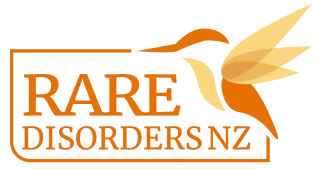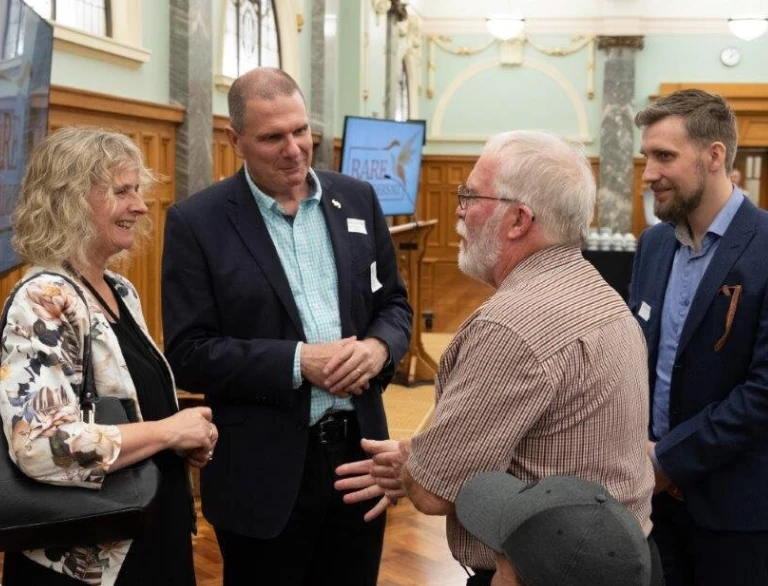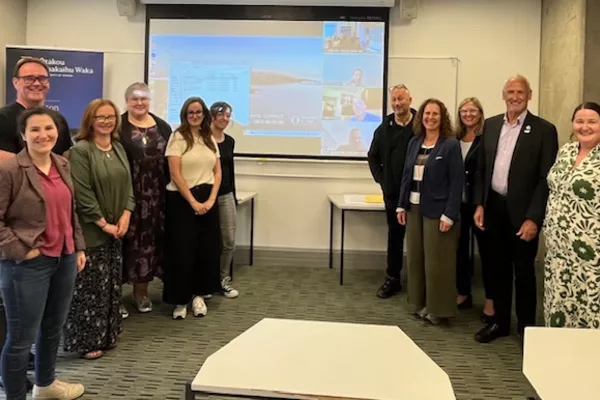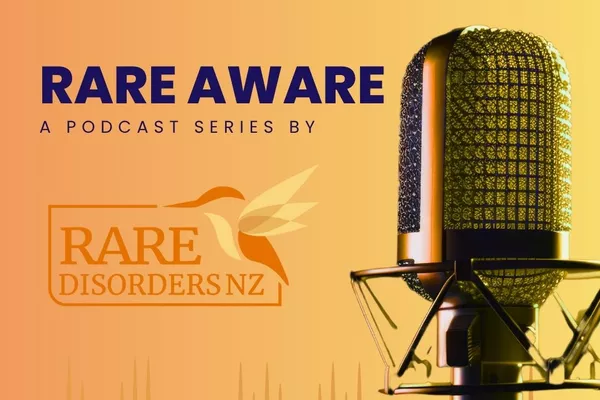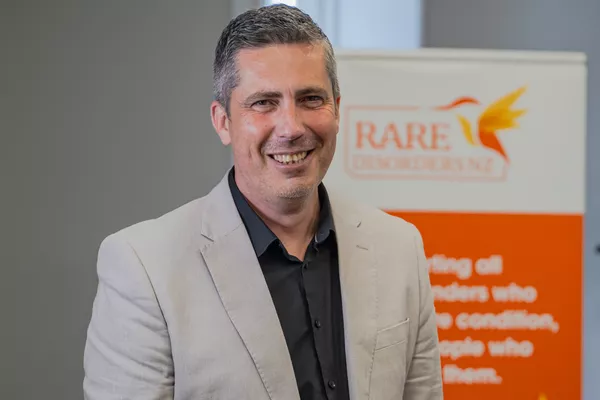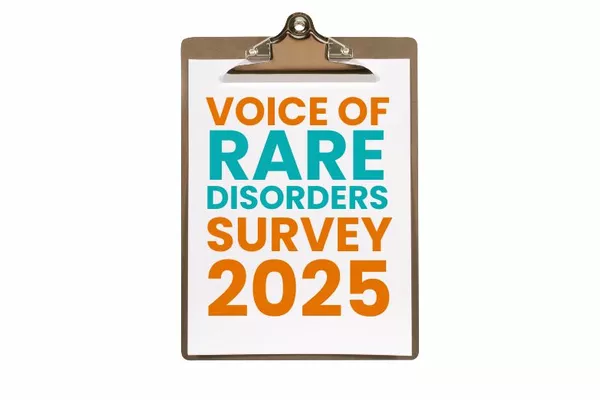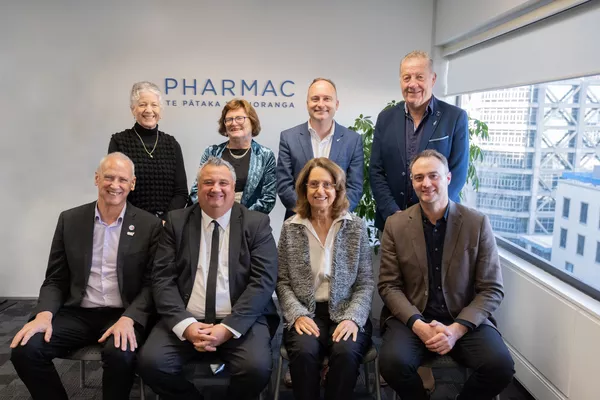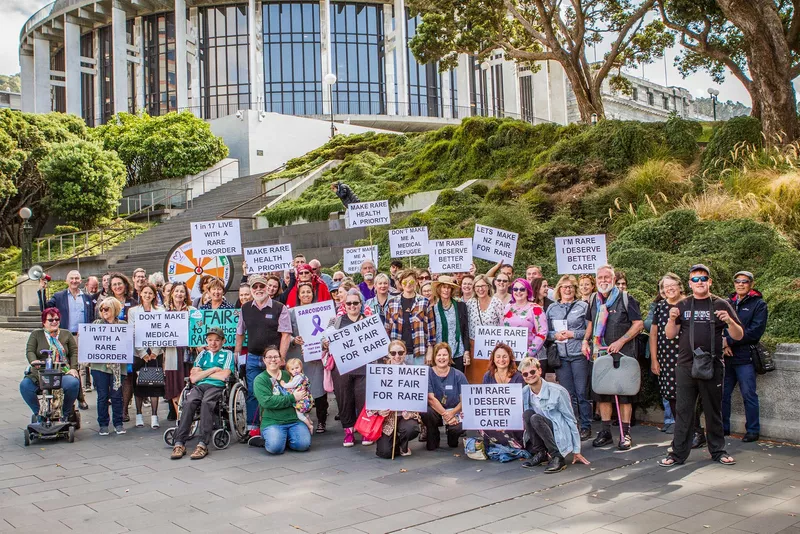Rare disorders in New Zealand
Understanding rare in Aotearoa
What are the numbers?
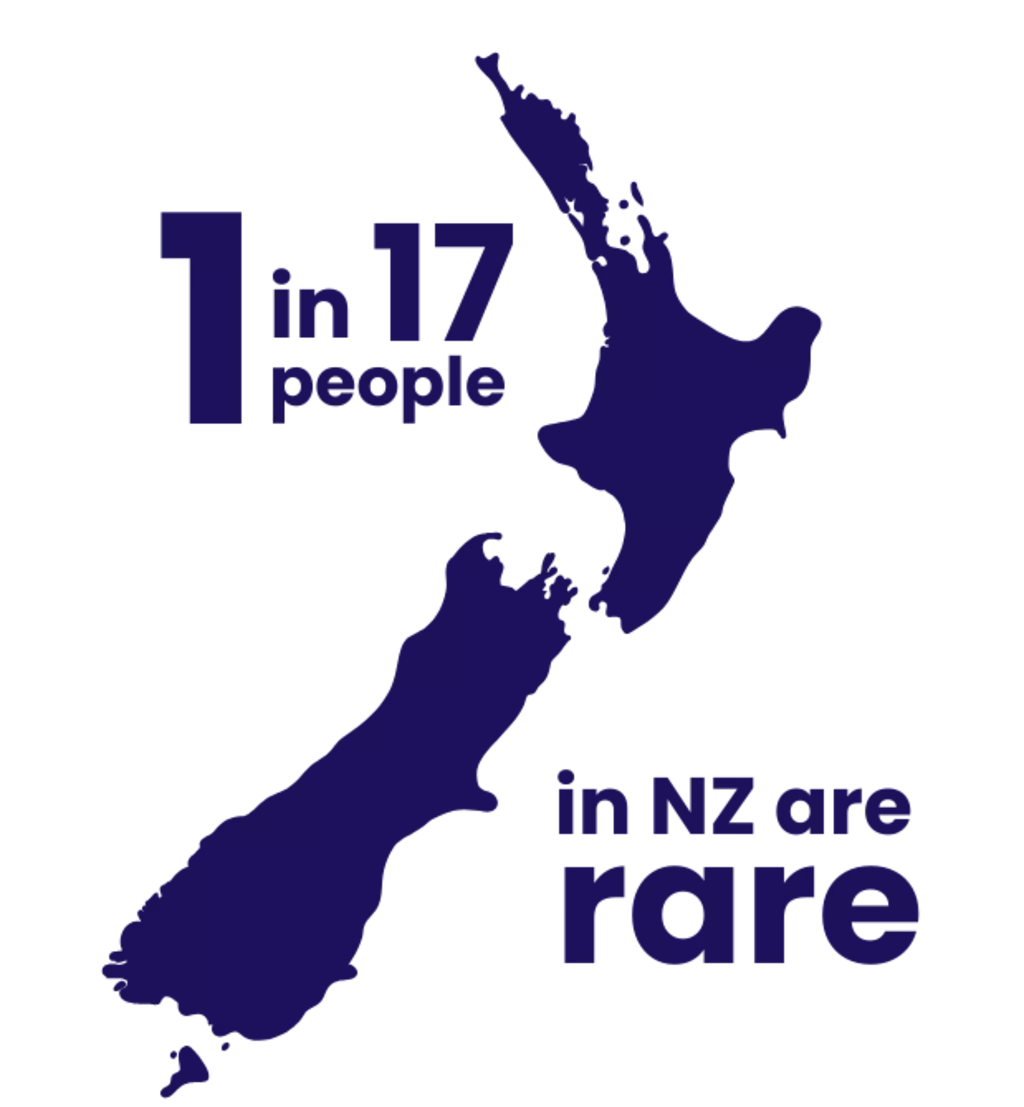
People living with a rare disorder are estimated to make up 6% of New Zealand’s population.
With over 7,000 known rare disorders, individually these disorders occur in very small numbers in the population, but collectively, rare disorders are estimated to affect 300,000 people in New Zealand.
This is, however, only an estimate based on international data, as data on rare disorders are not systematically collected in New Zealand. Learn more about this in our Insights Report by BERL.
What are the shared challenges?
Regardless of their specific disorder, from our own surveys we know that those affected share the same challenges and systemic barriers in New Zealand - lack of timely diagnosis, poor treatment access, lack of coordinated care, isolation, significant carer impact and for many, being lost in the system.
What will make a difference?
In 2019, the Rare Disorders NZ collective identified the following seven strategic priorities to improve health and wellbeing for people living with a rare disorder.
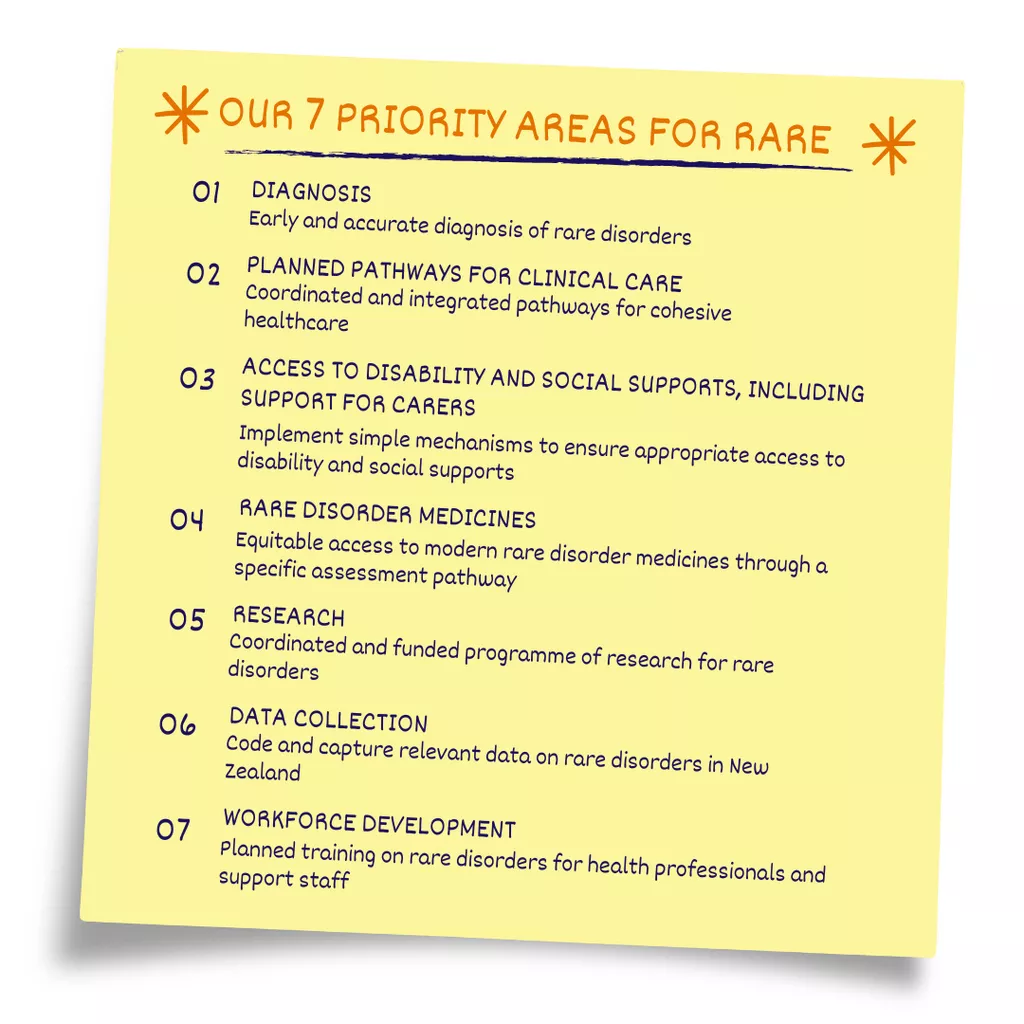
The New Zealand Government's commitment to rare disorders
- In 2021, New Zealand signed the United Nations Resolution on Persons Living with Rare Disorders (UNRPLRD). Access the resolution here.
- On 25 July 2024, the Ministry of Health published New Zealand's first-ever Rare Disorders Strategy, heeding the call from Rare Disorders NZ and the patient community.
- In 2025, the World Health Assembly, of which New Zealand is a member, adopted a resolution on rare diseases, making rare diseases a global health priority.
Looking ahead
Rare Disorders NZ is focused on ensuring that the health entities responsible for implementing the Rare Disorders Strategy take action to develop an implementation plan without delay.
Follow our advocacy work on the implementation of the strategy here.
Our seven strategic priorities listed above, reaffirmed by our collective following the release of the Rare Disorders Strategy in 2024, will continue to guide our advocacy during the implementation of the Strategy. Learn more about these here.
Support our work
We are a small organisation with a big heart. We are passionate about making New Zealand a better place for people living with rare disorders, but we cannot do it alone. We rely on grants and donations to carry out our work, so please consider contributing to the progress we continue to make for rare by donating today.
Thank you for your support!
